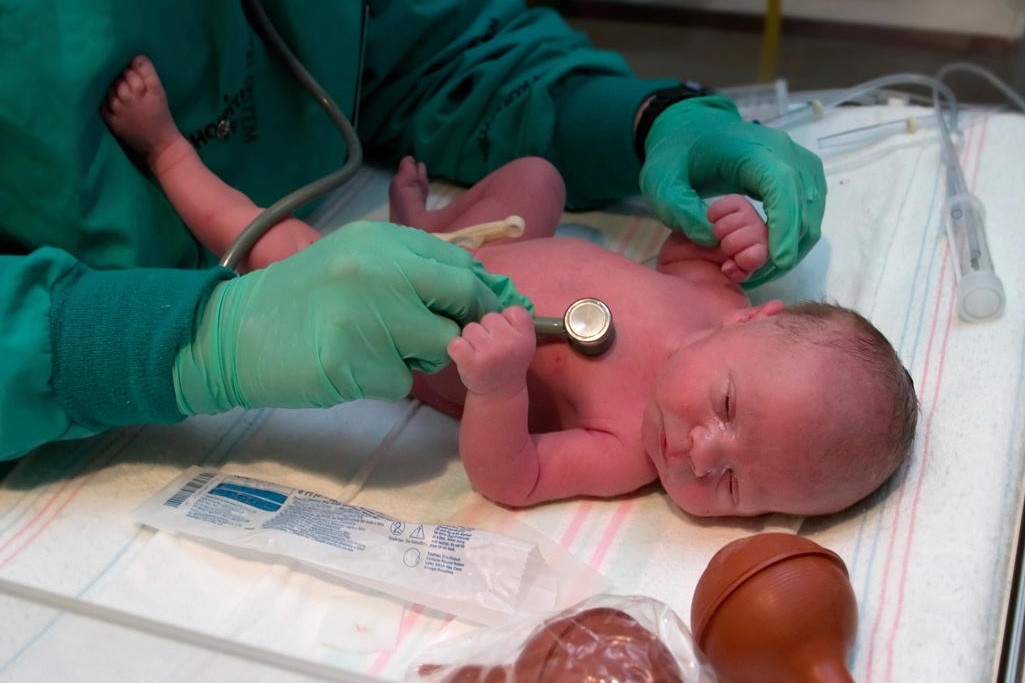
Bronchiolitis in infants: symptoms
Bronchiolitis epidemics are very frequent during the cold season. It is above all children who are most easily exposed to infection with the Respiratory Syncytial Virus, responsible for the main symptoms of respiratory infection
What is bronchiolitis?
Bronchiolitis is a typical disease of early childhood that affects the lower respiratory tract.
In most cases it is caused by the Respiratory Syncytial Virus (VRS), one of the most frequent causes of inflammation affecting the bronchioles, i.e. the last branches of the bronchi (with a diameter of less than a millimetre).
It is a particularly insidious virus that narrows the calibre of the bronchioles, reducing the flow of air into the lungs and causing breathing difficulties.
It is also particularly resistant to common antiseptics and the simplest sterilisation procedures.
CHILD’S HEALTH: LEARN MORE ABOUT MEDICHILD BY VISITING THE EMERGENCY EXPO BOOTH
The severity of bronchiolitis is all the greater the younger the age of the affected infant.
In fact, the infection is more severe when it affects a premature infant or children with pre-existing diseases (cardiac and pulmonary malformations, immune system abnormalities, etc.), although it is capable of infecting the respiratory system of patients of any age.
Respiratory Syncytial Virus: how is it spread?
The VRS responsible for bronchiolitis is a virus that is easily transmitted from person to person by particles released into the air through sneezing and coughing, but also deposited on objects and unintentionally brought into contact with the mouth, nose or eyes.
This is because the Respiratory Syncytial Virus can survive in the environment, on skin and hard surfaces (such as tables, door handles, toys and cots), for up to 7 hours.
Once infected, the incubation period lasts about 4 days, while the viral load remains active for at least 10 days in children.
Other factors involved in increasing the risk of infection for young children are unfavourable environmental conditions such as
- excessive crowding
- passive smoking
- the presence of other school-age children in the home as possible carriers of the virus.
Symptoms of bronchiolitis
Generally, bronchiolitis manifests itself with symptoms common to most inflammations affecting the respiratory system.
Rarely accompanied by fever (and in any case, if present, with very low temperatures), bronchiolitis primarily causes nasal secretion and breathing difficulties (dyspnoea) accompanied by expiratory hissing, a wheezing cough and breathlessness.
These difficulties are also associated with an accelerated respiratory rate (tachypnoea), bluish discolouration of the lips and around the mouth, and chest tightness due to exertion during inspiration.
Other symptoms that may follow are lack of appetite, insomnia, irritability and an overall distressed appearance of the child.
When should bronchiolitis be of concern?
It is important for parents to monitor symptoms closely with the paediatrician and to be informed about the possible evolution and worsening of the clinical picture that bronchiolitis can cause.
The signs that should lead to a hospital assessment are: reduced feeding, the presence of apnoea episodes and the appearance of respiratory difficulty.
Read Also:
Emergency Live Even More…Live: Download The New Free App Of Your Newspaper For IOS And Android
Bronchitis: Symptoms And Treatment
Bronchiolitis: Symptoms, Diagnosis, Treatment
Chest Pain In Children: How To Assess It, What Causes It
Bronchoscopy: Ambu Set New Standards For Single-Use Endoscope
What Is Chronic Obstructive Pulmonary Disease (COPD)?
Respiratory Syncytial Virus (RSV): How We Protect Our Children
Respiratory Syncytial Virus (RSV), 5 Tips For Parents
Infants’ Syncytial Virus, Italian Paediatricians: ‘Gone With Covid, But It Will Come Back’
Respiratory Syncytial Virus: A Potential Role For Ibuprofen In Older Adults’ Immunity To RSV
Neonatal Respiratory Distress: Factors To Take Into Account
Stress And Distress During Pregnancy: How To Protect Both Mother And Child
Respiratory Distress: What Are The Signs Of Respiratory Distress In Newborns?
Respiratory Distress Syndrome (ARDS): Therapy, Mechanical Ventilation, Monitoring
Bronchiolitis: Symptoms, Diagnosis, Treatment
Chest Pain In Children: How To Assess It, What Causes It
Bronchoscopy: Ambu Set New Standards For Single-Use Endoscope
Bronchiolitis In Paediatric Age: The Respiratory Syncytial Virus (VRS)


